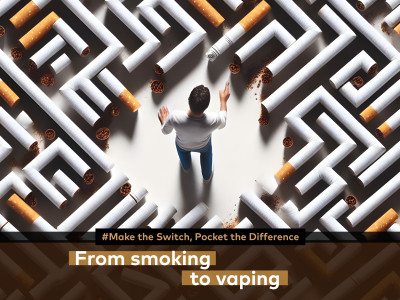The study, Prospective study of e-cigarette use and respiratory symptoms in adolescents and young adults, evaluated the associations of e-cigarette use with symptoms of wheeze, bronchitic symptoms and shortness of breath. The team concluded: “E-cigarette use in young adults was associated with respiratory symptoms, independent of combustible cannabis and cigarette exposures.”
Dr Lion Shahab, Professor of Health Psychology at University College London, responded to the research. He said: “This study took care to undertake some sensitivity analyses to assess the robustness of findings. While these results highlight the need to continue monitoring the health effects of e-cigarette use and point at potential respiratory effects, it is important to consider some limitations of this study.
“First, given the outcomes considered, other than asthma diagnosis at baseline no other contributing factors were assessed (for instance body mass index) and new asthma diagnoses were not assessed across the full follow-up period. This means that there may be other important, unmeasured factors that could explain the observed associations.
“Second, if e-cigarette use has an impact on respiratory symptoms, it would have been helpful to present a dose-response effect, that is, the more adolescents use e-cigarettes the greater the impact on symptoms. However, this study only considered a relatively crude measure – use in the past 30 days. A better measure of e-cigarette use would provide more confidence in these results.
“Third, co-use of other substances is higher among e-cigarette users, and it is likely that most e-cigarette users also used cigarettes or other combustible products at some point. Although co-use was assessed (and reduced the effect of e-cigarettes observed when included in the analysis) this was also again measured relatively crudely as past 30-day use. However, it is known that respiratory symptoms in cigarette smokers are long-lasting and are related to lifetime exposure.
“A better measure of current and past smoking is cigarette packyears to capture the independent contribution of these other products on respiratory symptoms. High co-occurrence of e-cigarette use with other product use makes it difficult to disentangle true effects.
“Notwithstanding these limitations, the paper does highlight the need for further studies to confirm these results. Ideally, such a study would compare the dose-response effects of e-cigarette use in a population of never smokers on respiratory symptoms, controlling for a wider range of variables to avoid the risk of unmeasured and residual confounding obscuring the true impact of e-cigarette use on lung function.”
Jon Foster, Policy Manager at Asthma + Lung UK, also commented: “It’s interesting that this study has found a link between symptoms of lung conditions – such as coughing and wheezing – and young people vaping, but regulations on the amount of nicotine and the chemicals used in vapes are much tighter in the UK than the US, so more research would be needed to find out if the situation in the UK is the same. However, given that we still know little about long-term effects, the growing popularity of vaping among children and young people is concerning.
“Much stronger action is needed from the government, especially to prevent under-18s accessing vapes. Our advice is that only those who smoke and are looking to give up tobacco should use vapes, as they are known to be an effective way to quit. We do not recommend that anyone else take up vaping.”
Photo Credit:
Photo by julien Tromeur on Unsplash
Dave Cross
Journalist at POTVDave is a freelance writer; with articles on music, motorbikes, football, pop-science, vaping and tobacco harm reduction in Sounds, Melody Maker, UBG, AWoL, Bike, When Saturday Comes, Vape News Magazine, and syndicated across the Johnston Press group. He was published in an anthology of “Greatest Football Writing”, but still believes this was a mistake. Dave contributes sketches to comedy shows and used to co-host a radio sketch show. He’s worked with numerous vape companies to develop content for their websites.
Join the discussion
Parliament Fears Two
The Department for Environment, Food and Rural Affairs faced questions from a Conservative MP and, oddly, a member of the Department for Environment, Food and Rural Affairs
Harm Reduction For The Rich
The United Kingdom risks becoming a harm reduction country only for the wealthy, according to Michael Landl of the World Vapers’ Alliance
Sacrificing Health For 2p Cut
Tory Government alienates vaping voters with its mission to cut tax by an unaffordable 2p to attract voters by placing a tax on vape products in the forthcoming budget
Scotland Announces Single-Use Vape Action
A ban on the sale and supply of single-use vapes in Scotland is due to come into effect on 1 April 2025, under proposed legislation published today












